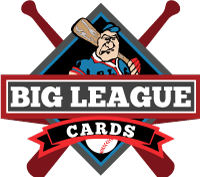Inside the Pack: What the Fanatics Valuation and Interview Tells Us
Last Thursday, Fanatics CEO Michael Rubin showed up on CNBC to talk about the company’s new trading card division. The appearance was in light of the news that the trading card division – not Fanatics as a whole, but just cards, which they’ve never produced – received funding that brought its valuation to $10.4 billion. That’s absolutely remarkable for a division that has never produced a single thing relevant to what they’re actually selling, and didn’t even exist 5 weeks ago. It might be easy to wonder how a company with no real proof of concept achieved a market valuation nearly 3 times the size of Topps’s and Panini’s were combined before the Fanatics exclusives knocked the wind out of their sails.
Watching the interview (which you can watch here) reminded me of an exercise I used to do on the first day of a class about Apple products that I used to teach to senior citizens. At the very beginning of the class, I’d ask the class to name who they thought were Apple’s biggest competitors. I could generally guess what the answers would be: almost always Google, Microsoft, LG, Samsung, and whatever PC manufacturers they knew, which were generally Dell, HP, and IBM. We spent the class talking about all the products and services that Apple has, and then we’d end the session by revisiting and adding to the list of competitors: Amazon in the cloud storage and media space; Bose and Sony for headphones; Hulu, Netflix, Amazon, and Roku in the streaming TV wars; Visa and Mastercard for credit cards; the list grew and grew.
The main takeaway I got from Rubin’s interview is that Fanatics is to the sports card industry what Apple is to the tech sector.
Fanatics’s $10 billion valuation doesn’t come strictly from selling cards, and certainly not from doing it the way it’s always been done. Rubin went out of his way to mention all the money companies leave on the table, noting that “traditional manufacturers make 1 billion per year per license. That’s selling to distributors, who then sell to retailers, who then sell to resellers, who then put them on ebay, who then sell them to end collectors.” In one thought, Rubin puts distributors, local card shops, retail partners like Target and Walmart, and ebay on notice: Fanatics is coming.
Rubin promised to “tak[e] this model much more direct to consumer and adding in an integrated collector’s experience,” which couldn’t be clearer: they want the entire space for themselves. Blowout Cards? Steel City Collectibles? MJ Holdings? Walmart? All potential victims in the attempt to sell direct to customer.
The CEO also specifically mentioned secondary sales, grading, breaking, insurance, storage, and financing as areas that Fanatics would be integrating. Again, this draws a host of competitors in its crosshairs: COMC, Loupe, Beckett, PWCC, Probstein, PSA, SGC, and pretty much every breaker you’ve ever seen should be scared.
This is where the $10 billion valuation comes from. Though it’s just a nascent idea, the story they’re telling is a powerful one – strong enough to secure big funding. They aren’t a $10 billion company on the strength of producing licensed cards, but if you add in the possibility of an ebay killer for sports cards, an in-house grading service, internal breakers, and storage, it becomes crystal clear as to how the huge number was determined.
We still have yet to see plans for any of this, but the people with lots of money are buying in and investing. Clearly the picture Fanatics is painting is a nice one.




